Learn about Tasmania’s iconic eucalypts. From towering gums to smaller species, these trees define native landscapes and wildlife habitats.
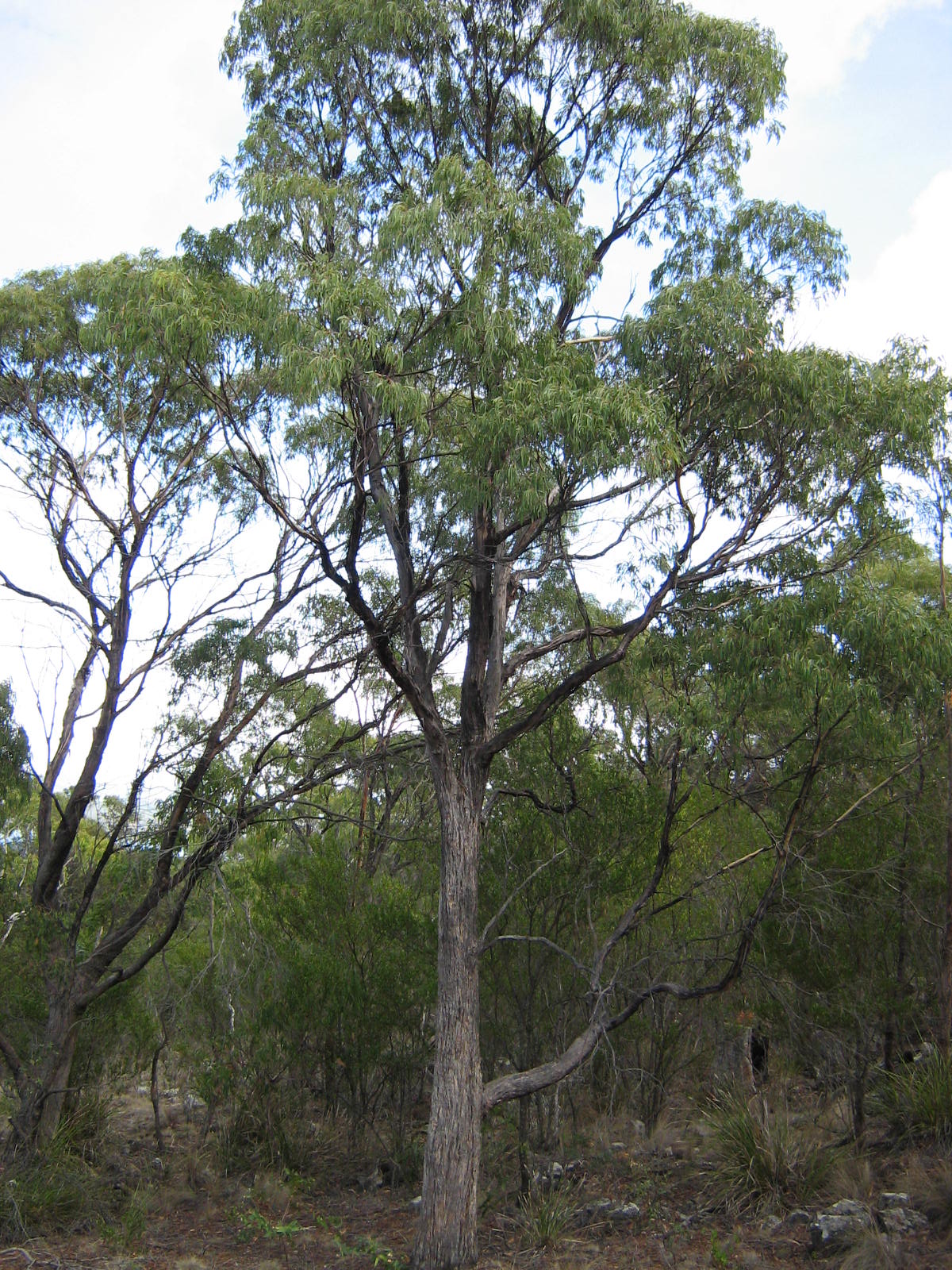
Small tree with mallee habit to 5m or tree 15 - 20m. White/cream flowers Nov - Jan in large clusters. Bark rough, sometimes deciduous on upper limbs. Tolerates frost, drought, full sun, all soil types. Fast growing. Bird and bee attracting. Highly flammable.
Image: Anna Povey - with permission

Shrubby mallee or small tree to 10m. Smooth copper/grey bark that sheds in ribbons. Cream flowers in clusters of 7. Suits dry well-drained site. Graceful and very hardy small eucalypt for smaller gardens, kept small by minimal tip pruning. Excellent low windbreak. Bird attracting.
Image: DPIPWE staff - Natural Values Atlas

Tree 10 - 40m. White/cream flowers in spring. Bark rough at the base, smooth above with cream, pink, orange or olive-green colourings. Tolerates most soil types and drought. Fast growing, wind firm and frost hardy. Low branching makes it an excellent tall windbreak. Bird attracting.
Image: Anna Povey - with permission
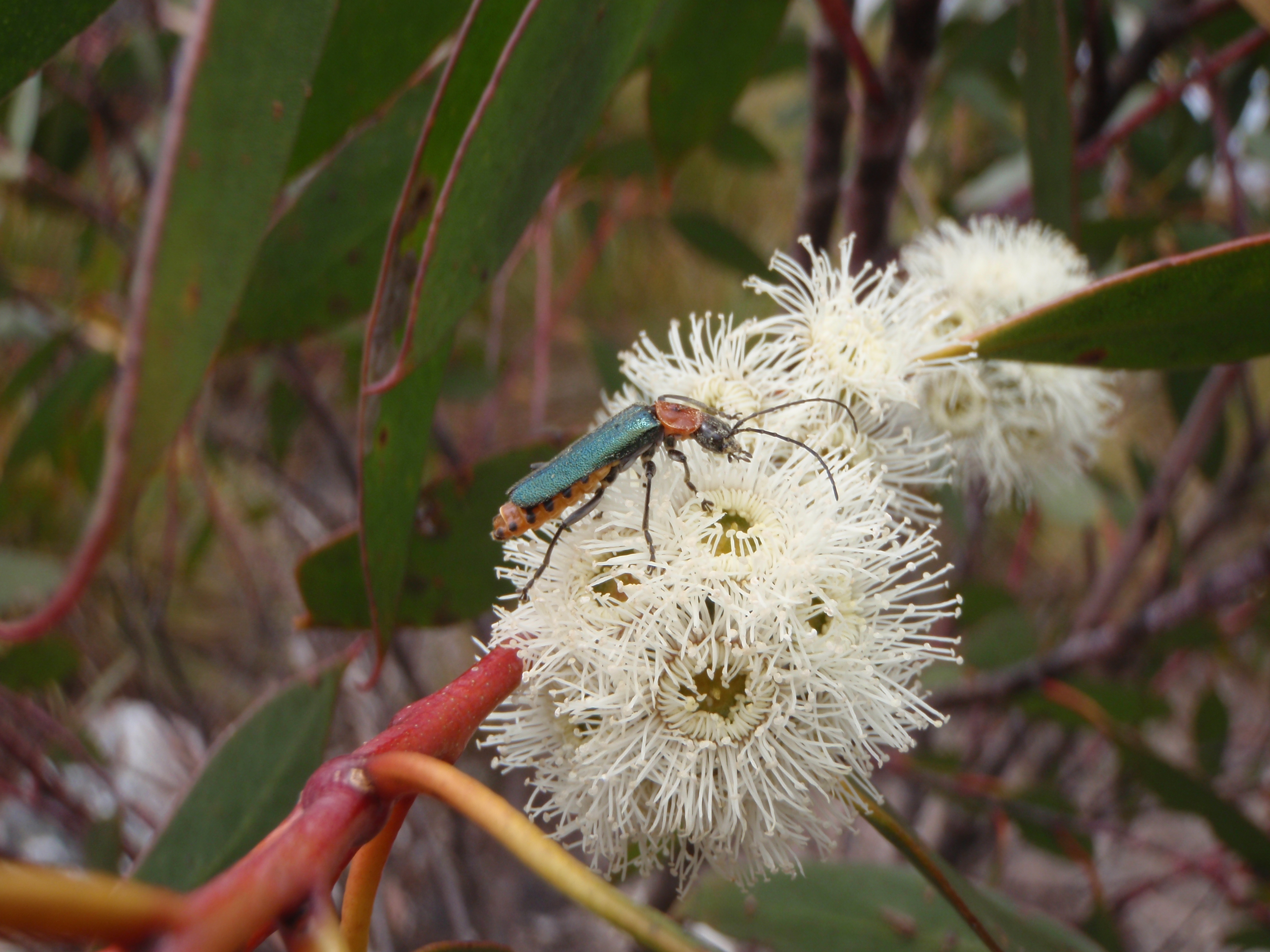
Dense, stunted small tree or tall tree to 30m. White flowers in summer. Deciduous bark, smooth and ribboning, revealing red, green, cream, yellow patches. Occurs naturally in alpine conditions. Very frost tolerant. Fast growing. Prefers year-round water, well-drained soil. Bee attracting.
Image: Anna Povey - with permission

Tree 3 - 30m. White flowers, winter in the east, spring in the west. Smooth white bark with green and purplish blotches. Glaucous leaves, fruit and branchlets. Adaptable, drought tolerant once established, tolerates light frost. Full sun. Susceptible to leaf eating insects.
Image: Julie Ayre - with permission

Tree 10 - 60m. White flowers in autumn. Bark scaly and dark at base, smooth white-grey limbs; deciduous bark peels in flakes. Very fast growing, wind firm, tolerates frost. Prefers moist soil with fair drainage.
Image: Anna Povey - with permission
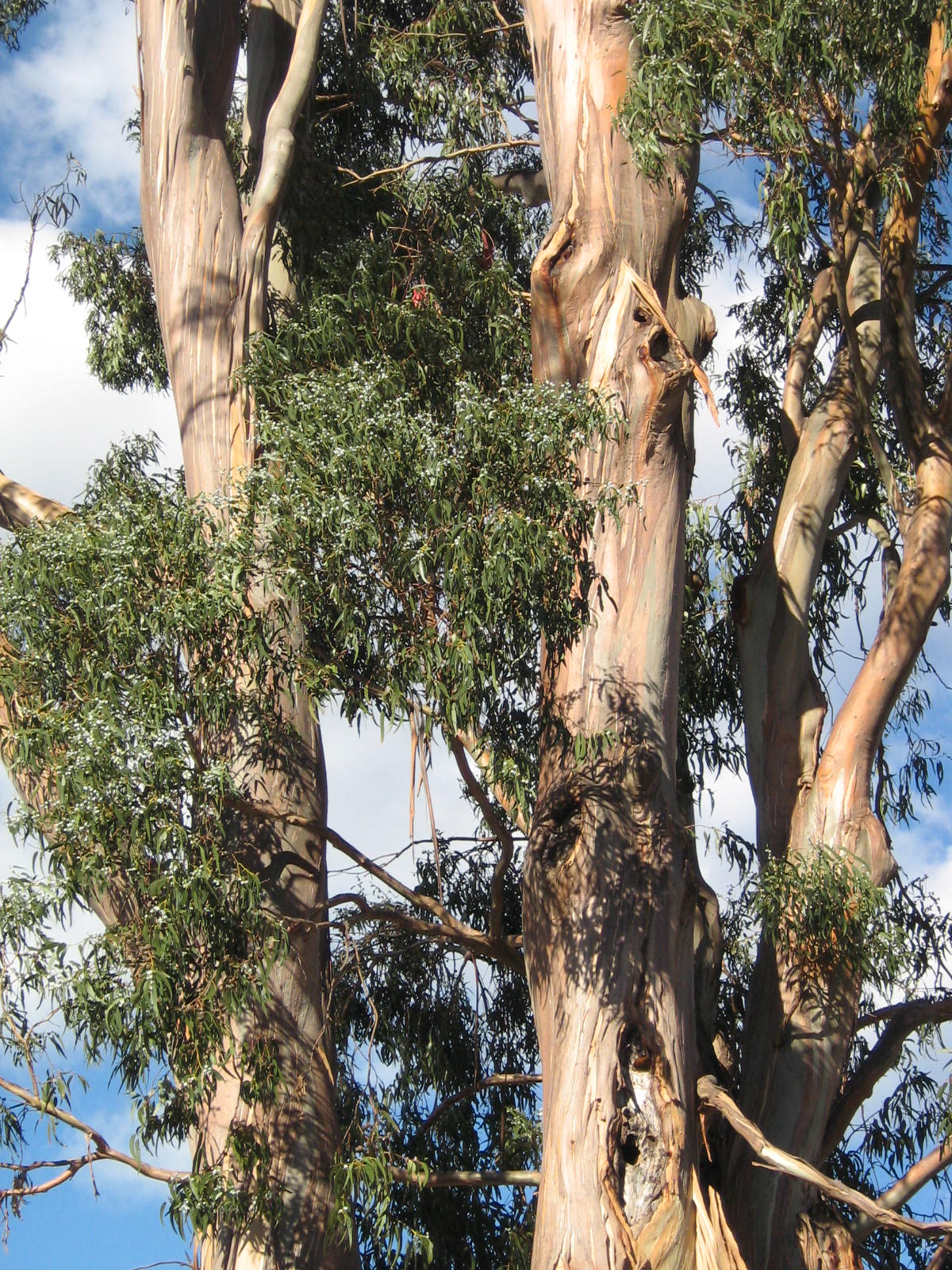
Spreading tree: 15m on dry soils, to 60m in forests. White flowers spring/summer. Large glaucous capsule. Bark rough at base, smooth white-grey above, shedding long ribbons. Very adaptable, all soils, full sun, very frost hardy, drought tolerant once established. Habitat tree for swift parrot. Useful honey tree. Tasmanian floral emblem.
Image: Anna Povey - with permission

Small tree 6 - 15m. Profuse cream flowers with peak Jan - Apr. Bark deciduous, rough at base, smooth grey/pink bark above. Branchlets, leaves and capsules glaucous. Rare and threatened, only occurs locally near South Arm and Risdon. Attractive specimen tree. Suits coastal planting.
Image: DPIPWE staff - Natural Values Atlas
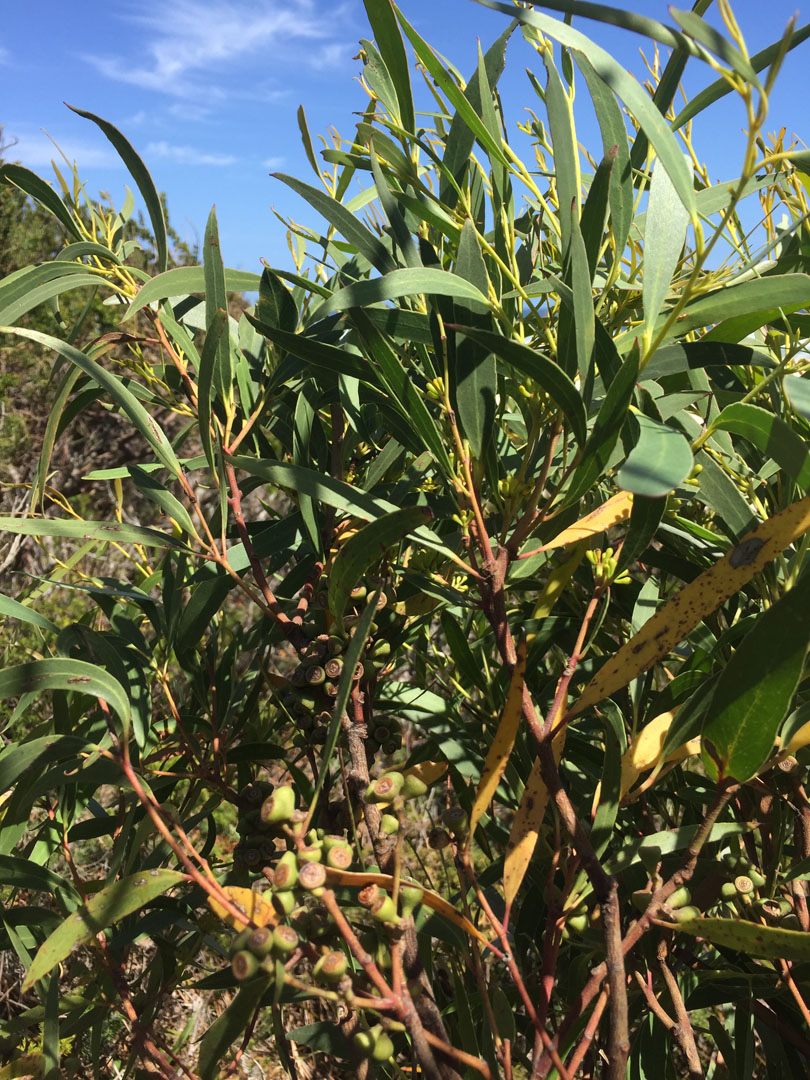
Small mallee to tall tree, 4 - 40m. White/creamy-yellow flowers spring/summer. Bark dark grey, rough and fibrous on trunk, deciduous on branches. Tolerant of poor, wet soil and exposure. Bee attracting. Can be kept pruned to a shrub form.
Image: Anna Povey - with permission
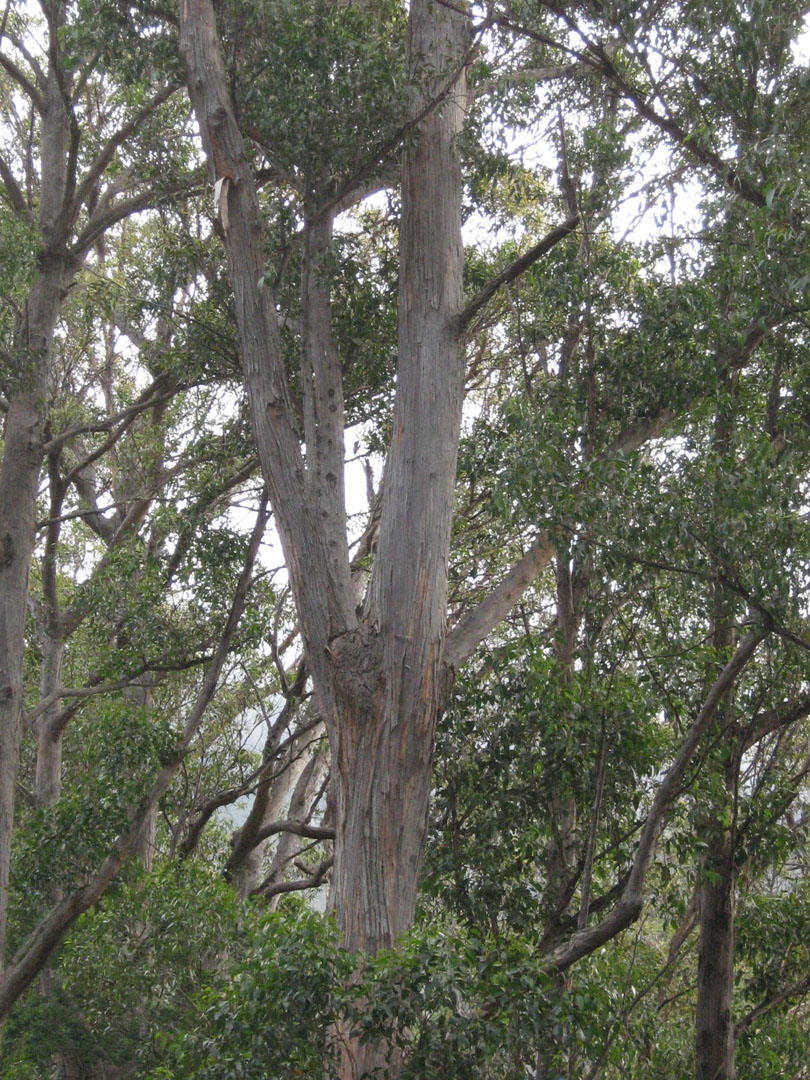
Tall tree to 90m, dense crown. Profuse white/cream flowers Oct - May. Bark thick, rough, fibrous persisting to secondary branches. Widespread up to 600m elevation on deep soils with good drainage. Frost and drought tolerant. Useful in providing high-level shelter (up to 50m) in windbreaks. Dense foliage provides shade. Attracts birds, bees and other insects. High flammability.
Image: Anna Povey - with permission
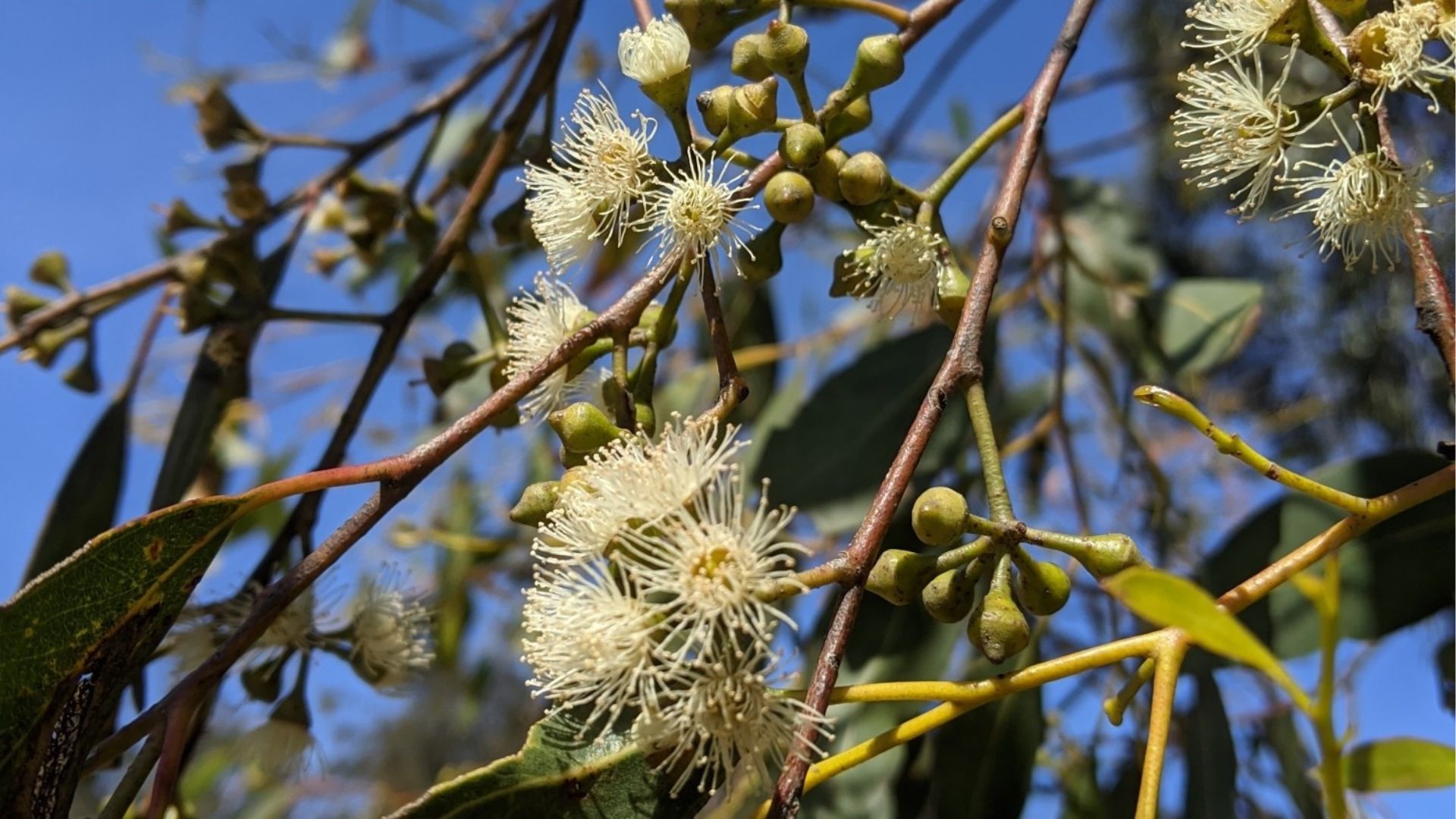
Often mallee habit to 15m or tall tree to 50m. White flowers in winter/spring. Bark deciduous, peeling in thick ribbons on upper trunk and branches, trunk rough and scaly at base. Widespread, frequent on coastal sandy soils, also found in stands on poorly drained soils. Hardy, tolerates poor drainage and moderate frosts. Bee attracting.
Image: Nick Fitzgerald CC BY-NC

Tree 6 - 20m, often with long weeping branches. Prolific creamy-white flowers in summer. Bark deciduous, smooth white/grey trunk and branches. Adaptable to soils and temperatures. Medium-level shelter (up to 20m) in mixed species windbreaks. Useful for erosion control. Attracts birds, bees and other insects.
Image: Ray Turnbull CC BY-NC
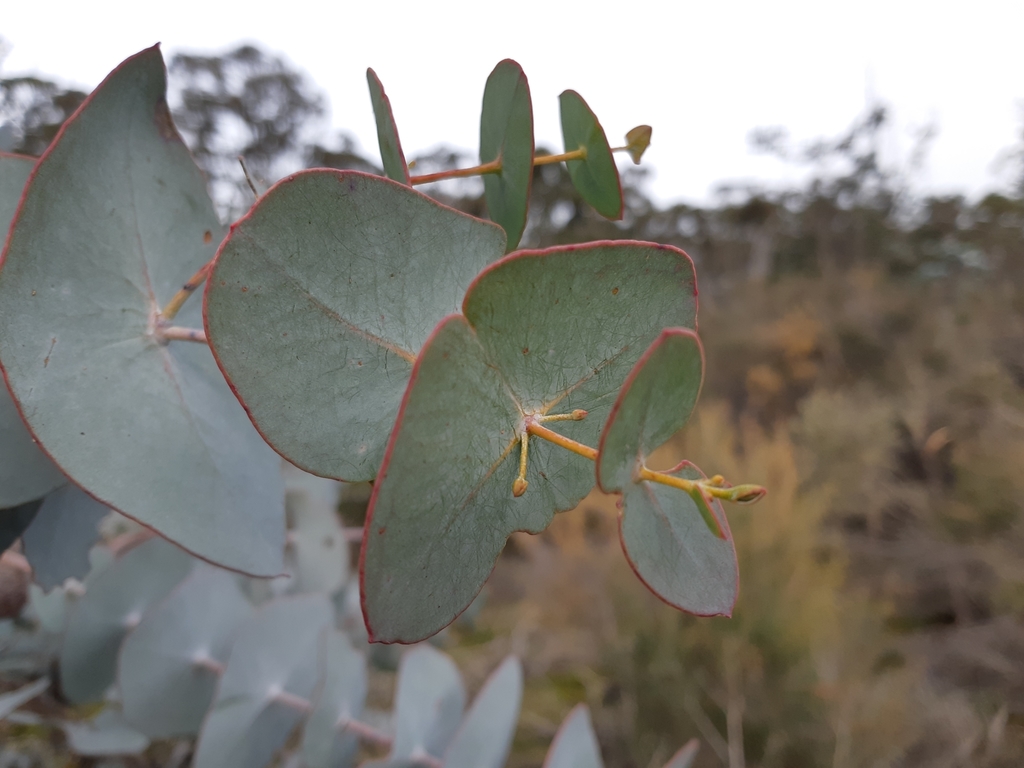
Small tree with mallee habit or single trunk 4 - 6m. White/cream flowers in summer. Bark deciduous, often scaly at base, smooth and blotched above. Adapts well to most moderately fertile to poor soils that drain well without becoming dry. Attractive glaucous foliage. Prune to maintain juvenile foliage that stays attached to stems and spins.
Image: Ray Turnbull CC BY-NC

Slender tree 9 - 21m. White honey-scented flowers in summer. Deciduous bark, smooth white blotched trunk and limbs. Fine foliage; tip prune to maintain as a small bush. Adapts well to any soil with good drainage, fast growing, wind firm, full sun but will grow in shady locations. Bee and bird attracting.
Image: Peter Shanks - public domain
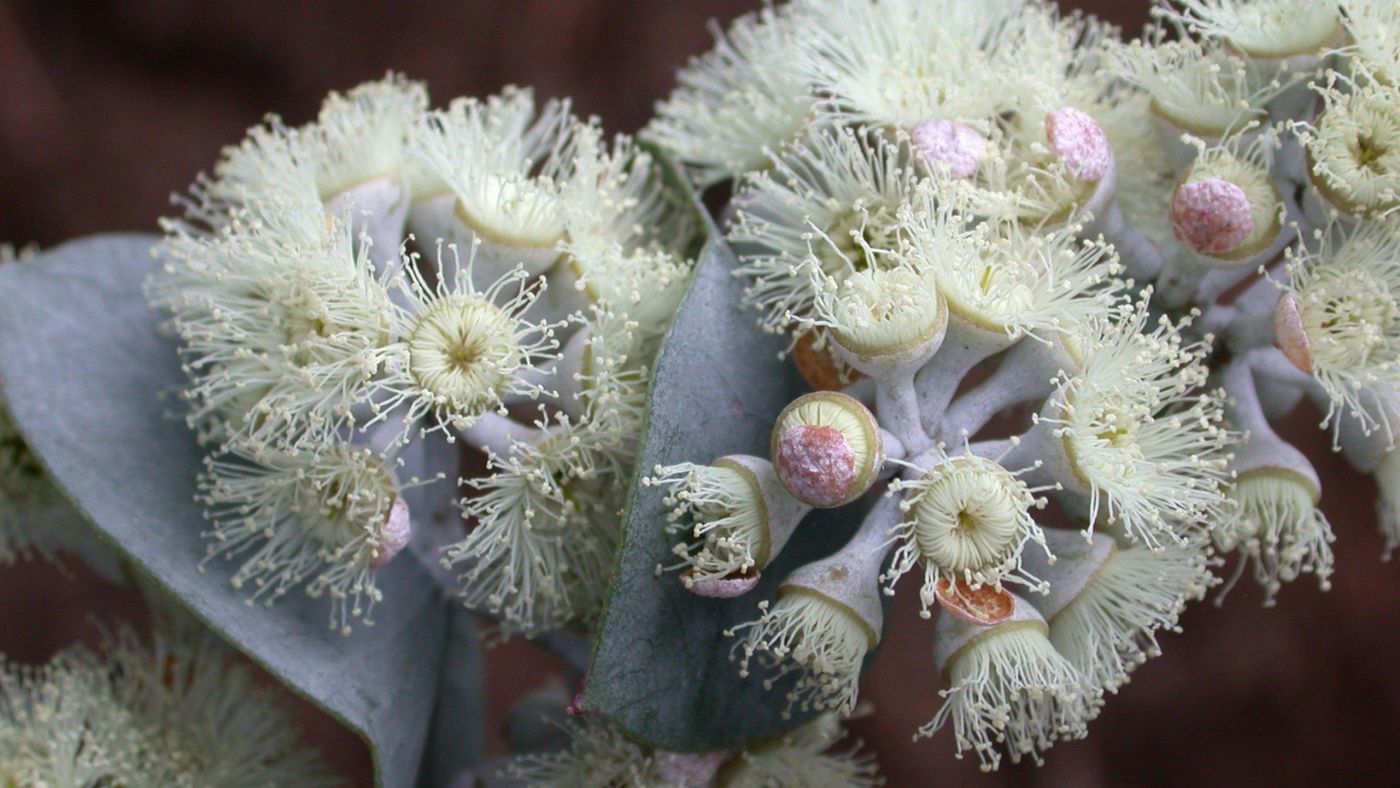
Glaucous tree 3 - 8m. White/cream flowers in spring. Attractive silvery foliage; maintain by pruning. Smooth ash-grey trunk, deciduous bark. Prefers full sun, well-drained and nutrient poor soils. Tolerates frost and drought hardy.
Image: Rob Wiltshire - Natural Values Atlas
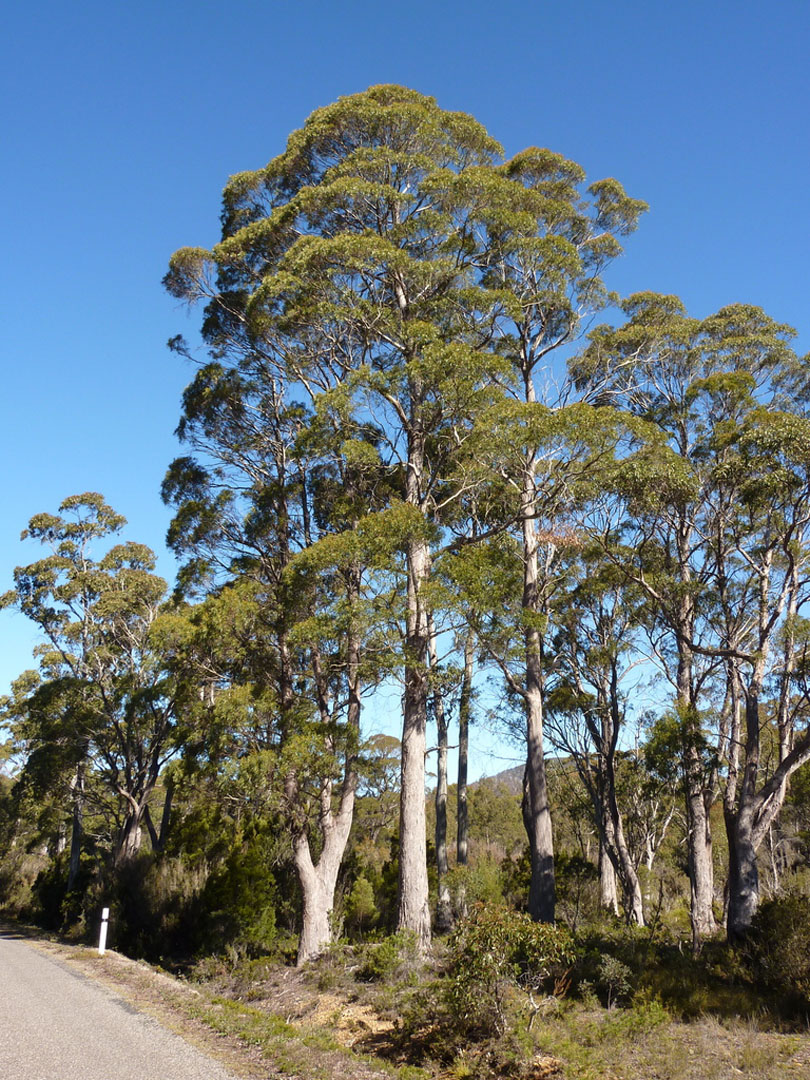
Tree 9 - 20m. White flowers in summer. Rough fibrous bark usually persisting to the secondary branches, young stems dark red. Fast growing, extremely cold tolerant, will adapt to any soil including poorly drained.
Image: Dean Nicolle CC BY-NC
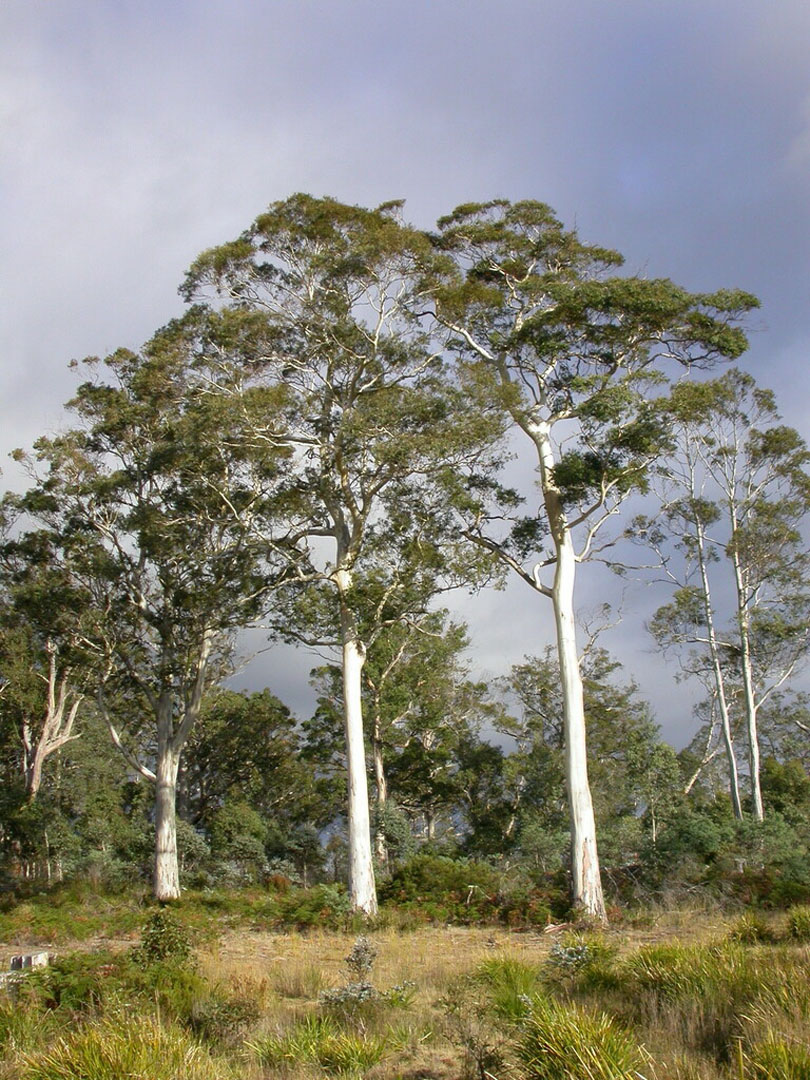
Tree 10 - 30m. White flowers in summer. Bark peels in flakes, trunk dark in colour at the base, light white/salmon above. Hardy, suitable for cold and dry sites. Medium level shelter in mixed windbreaks. Attracts birds, bees and other insects.
Image: Dean Nicolle CC BY-NC
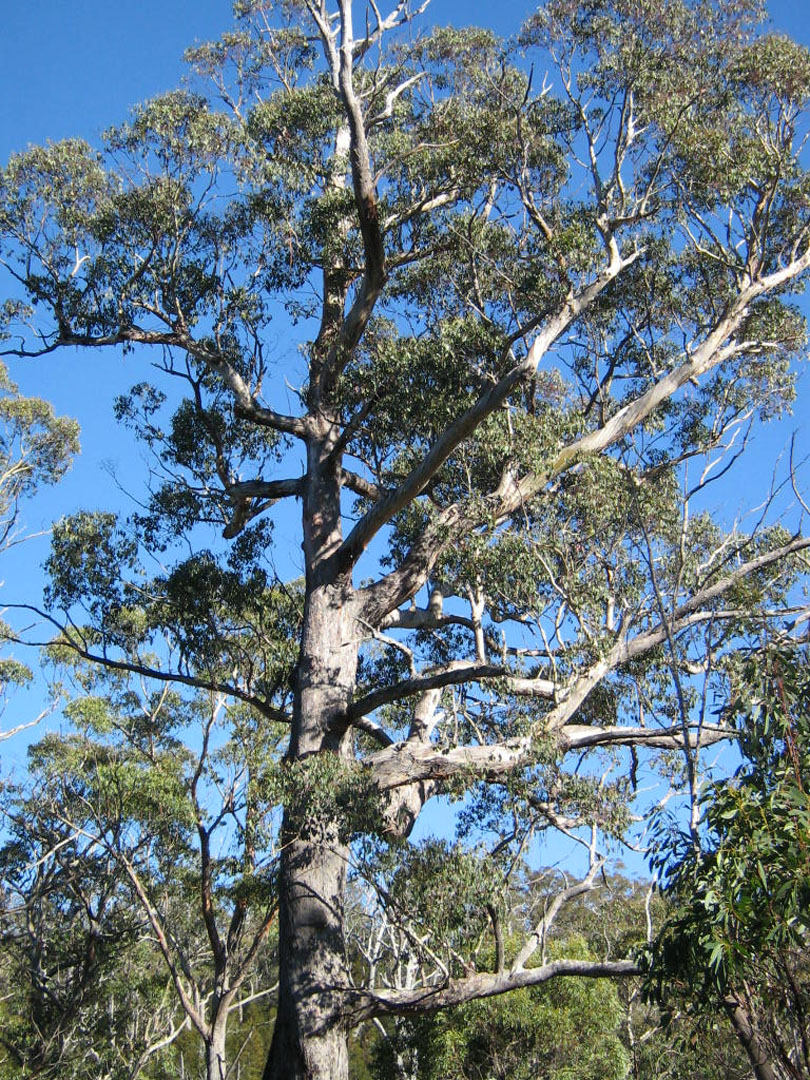
Tall tree 20 - 50m. White flowers Dec - March. Bark rough, fibrous and persistent on lower parts of trunk, deciduous upper parts and limbs, peels in thin ribbons. Widespread at altitudes over 600m. Prefers deep, well-watered, well-drained loamy soils. Bee attracting.
Image: Anna Povey - with permission
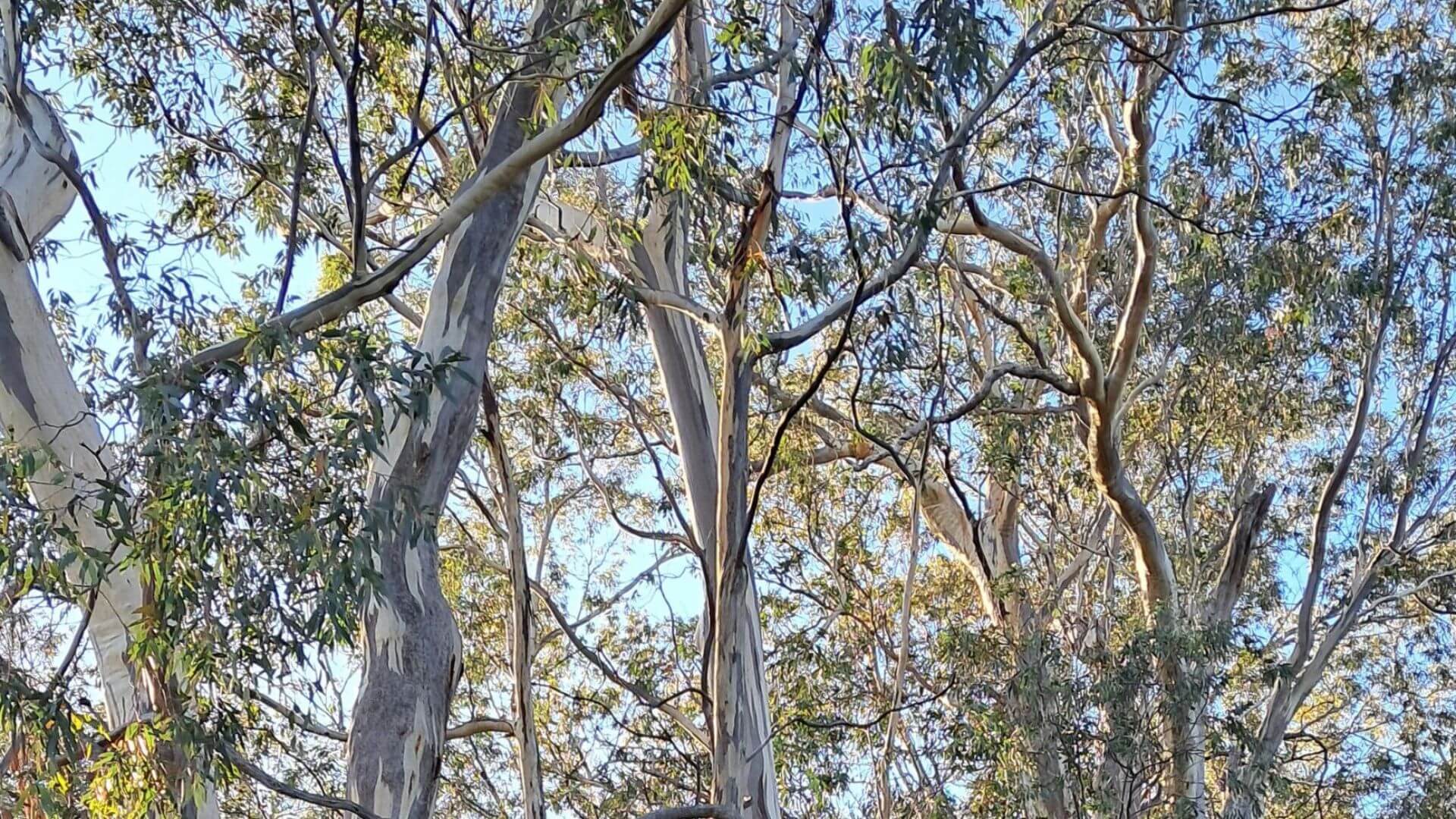
Tree 8 - 25m, often with weeping branches to ground level. White flowers in spring/summer. Silvery leaves. Deciduous bark, smooth white/grey trunk. Well-drained sites, tolerates part shade. Bird attracting.
Image: Kirrilli Kent - with permission

Tall spreading tree 20 - 50m. White flowers in summer. Deciduous bark peeling in long strips, persistent rough and scaly at base, cream above. In summer 'manna', a sweet substance, may exude through the bark. Prefers moist, well-drained sites. Fast growing, frost hardy, wind firm, bird attracting. Habitat for endangered forty-spotted pardalote.
Image: Dean Nicolle CC BY-NC